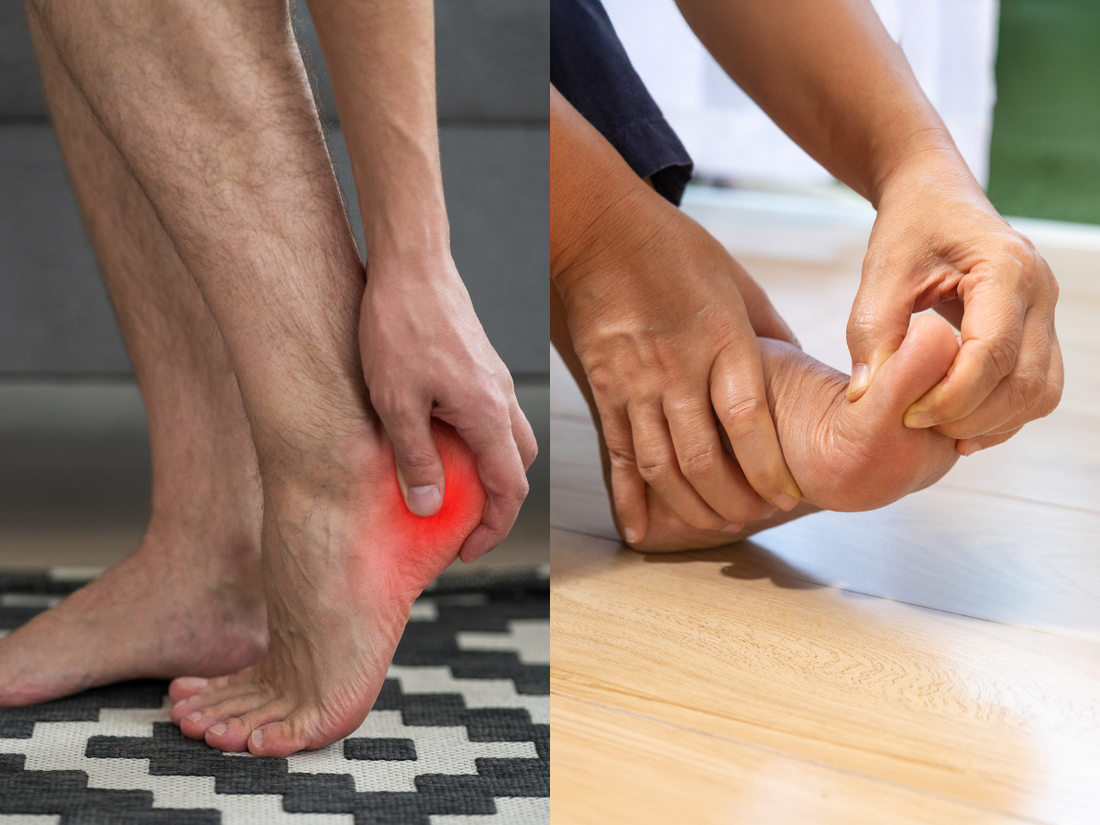
👣 Why Foot Pain Is So Common After 30 — and How to Fix It
If you’ve ever woken up with sore heels, burning arches, or tired feet after a long day, you’re not alone. Foot pain becomes increasingly common after 30, especially among active adults balancing work, exercise, and family life.
Our feet carry us through thousands of steps every day — yet we often neglect them until pain strikes. From stiff joints to sore soles, these small but complex structures can cause surprisingly big discomfort.
The good news? Most types of foot pain can be managed naturally with the right foot care habits, stretches, and cooling therapies like Polar Frost Pain Relieving Gel, a trusted solution across Europe for soothing and refreshing tired, aching feet.
Understanding the Pain
Why Foot Pain Appears After 30
Once we pass 30, the body undergoes subtle changes: muscle elasticity decreases, circulation slows slightly, and the natural fat pads in our feet begin to thin. Combine that with modern lifestyles — long office hours, tight shoes, and more time on our feet — and it’s easy to see why foot pain becomes a frequent complaint.
Common Causes of Foot Pain After 30
-
Plantar Fasciitis:
Inflammation of the thick tissue connecting your heel to your toes — causing sharp pain, especially in the morning. -
Flat Feet or Fallen Arches:
As tendons weaken with age, arch support declines, increasing strain on muscles and joints. -
Footwear Issues:
Tight, unsupportive shoes or high heels can lead to calluses, corns, and chronic heel discomfort. -
Overuse or Standing All Day:
Prolonged pressure causes swelling and fatigue, especially in service, retail, or healthcare jobs. -
Joint Degeneration:
Early osteoarthritis or joint inflammation can affect the midfoot or big toe joints. -
Circulation and Nerve Issues:
Reduced blood flow or mild neuropathy can lead to burning or tingling sensations.
Whether you’re an office worker, runner, or parent constantly on the move, foot pain can interrupt daily life — but it doesn’t have to.
Practical Tips for Relief
1. Give Your Feet Proper Rest
After long hours of standing or walking, elevate your feet to reduce swelling. Rest allows muscles and tendons to recover from daily strain.
💡 Tip: Elevate your legs on a pillow for 15–20 minutes at the end of the day.
2. Stretch and Strengthen
Gentle stretches improve flexibility and prevent stiffness.
Effective Foot Stretches:
- Toe curls: Strengthen the small muscles of the foot.
- Calf stretch: Reduces tension in the Achilles tendon.
- Plantar fascia roll: Use a tennis ball or frozen bottle under your arch for 2–3 minutes.
- Ankle rotations: Keep joints flexible and support circulation.
3. Choose Supportive Footwear
- Opt for shoes with good arch support and cushioning.
- Avoid wearing heels or tight shoes for long periods.
- Replace worn-out shoes regularly.
- Use orthotic insoles if you have flat feet or overpronation.
4. Apply Cold or Cooling Therapy
When pain flares up, cooling therapy can reduce inflammation and provide instant relief — especially after long hours of standing or walking.
You can use an ice pack or, even better, a pain relief cooling gel like Polar Frost, which is easier to apply and skin-friendly.
5. Maintain a Healthy Weight
Extra body weight increases the load on your feet. Even small reductions can significantly ease pressure on foot joints and tissues.
6. Regular Foot Massage
Massage promotes blood flow, reduces stiffness, and helps muscles recover. Use gentle circular motions around the heel, arch, and toes — adding a cooling gel enhances the soothing effect.
Cooling Gel Solution: The Polar Frost Advantage
When it comes to immediate comfort and recovery, Polar Frost Pain Relieving Gel is a game-changer. It delivers fast, cooling therapy that calms inflammation, soothes tired muscles, and helps restore comfort naturally.
Why Choose Polar Frost Gel
- Instant cooling sensation: The menthol-based formula provides refreshing relief from soreness and swelling.
- Natural, non-opioid solution: Safe for everyday use — no strong medication required.
- Infused with Aloe Vera: Hydrates and softens skin, perfect for delicate foot areas.
- Multi-purpose relief: Ideal for foot pain, knee pain, joint stiffness, sports recovery, and back pain relief.
How to Use Polar Frost Gel
- Apply a small amount directly to the sore area.
- Massage gently into the skin until fully absorbed.
- Reapply 3–4 times a day as needed.
💙 Pro Tip: For a spa-like experience, apply Polar Frost Gel before bedtime, wear breathable cotton socks, and wake up with refreshed, relaxed feet.
Expert Advice & Preventive Care
European physiotherapists emphasize that foot pain after 30 can often be prevented through consistent self-care and early attention to warning signs.
Professional Tips for Long-Term Foot Health
- Stretch daily: Especially calves and arches before and after physical activity.
- Moisturize regularly: Prevent cracked heels and dryness.
- Don’t ignore mild pain: Early treatment prevents chronic inflammation.
- Alternate shoes: Avoid wearing the same pair daily; let shoes rest and air out.
- Stay active: Gentle movement improves blood flow and keeps joints flexible.
🩺 Physio Insight: Using a cooling gel like Polar Frost after long shifts or workouts helps reduce micro-inflammation and supports faster recovery — especially in the heels and arches.
Conclusion;
Foot pain after 30 doesn’t have to limit your mobility or lifestyle. With the right combination of supportive shoes, targeted stretches, and natural cooling therapy, you can keep your feet healthy, strong, and pain-free.
Polar Frost Pain Relieving Gel offers a safe, effective, and refreshing way to ease discomfort and revive tired feet — trusted by physiotherapists and active adults across Europe.
